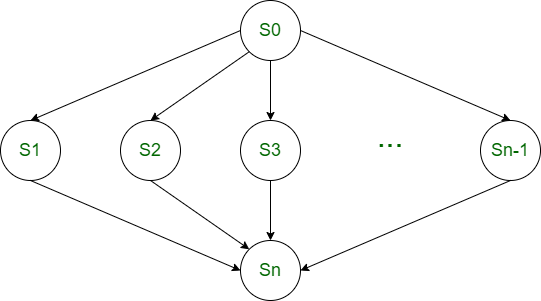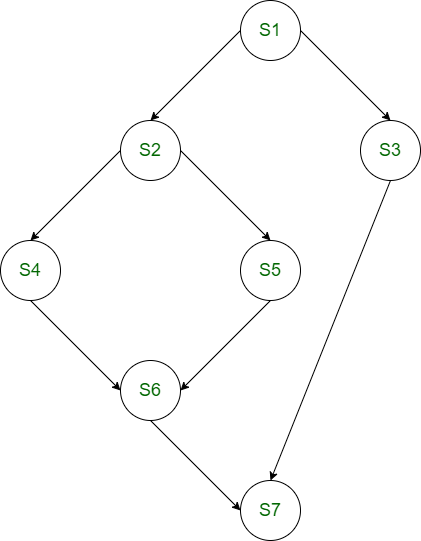Parbegin/Parend Concurrent statement | Operating System - Computer Science Engineering (CSE) PDF Download
Introduction
PARBEGIN/PAREND statement is a higher-level language construct for specifying concurrency. All statements can be executed concurrently those are enclosed between PARBEGIN and PAREND. It is used in modelling precedence graph. It is used as an alternative for the FORK/JOIN statement.
Note: PARBEGIN/PAREND is also called COBEGIN/COEND.
Consider the following program:
S0;
PARBEGIN;
S1;
S2;
...
Sn-1;
PAREND;
Sn;
The above program is equivalent to the following precedence graph.

Example:
Construct the precedence graph for the following parbegin/parend program.
begin
S1;
parbegin
S3;
begin
S2;
parbegin
S4;
S5;
parend;
S6;
end;
parend;
S7;
end;
Explanation:

We can also Parbegin two process –
Void P( ) Void Q( )
{ {
A; D;
B; E;
C; }
}
The relative order among the statements of P & Q is always maintained
Advantages of Parbegin/Parend:
- It is a high-level language block-structure.
- It has the advantage of structured control statements.
- Semaphores mechanism is also one of the advantages.
Disadvantages of Parbegin/Parend:
- It is not powerful enough to model all possible precedence graph.
- It is less powerful than the FORK/JOIN construct in modelling precedence graph.
|
10 videos|141 docs|33 tests
|
FAQs on Parbegin/Parend Concurrent statement - Operating System - Computer Science Engineering (CSE)
| 1. What is a concurrent statement in Computer Science Engineering (CSE)? |  |
| 2. How does a concurrent statement differ from a sequential statement in CSE? |  |
| 3. What are some commonly used concurrent statement constructs in CSE? |  |
| 4. How can concurrent statements improve the performance of computer systems in CSE? |  |
| 5. What are the challenges associated with using concurrent statements in CSE? |  |
















